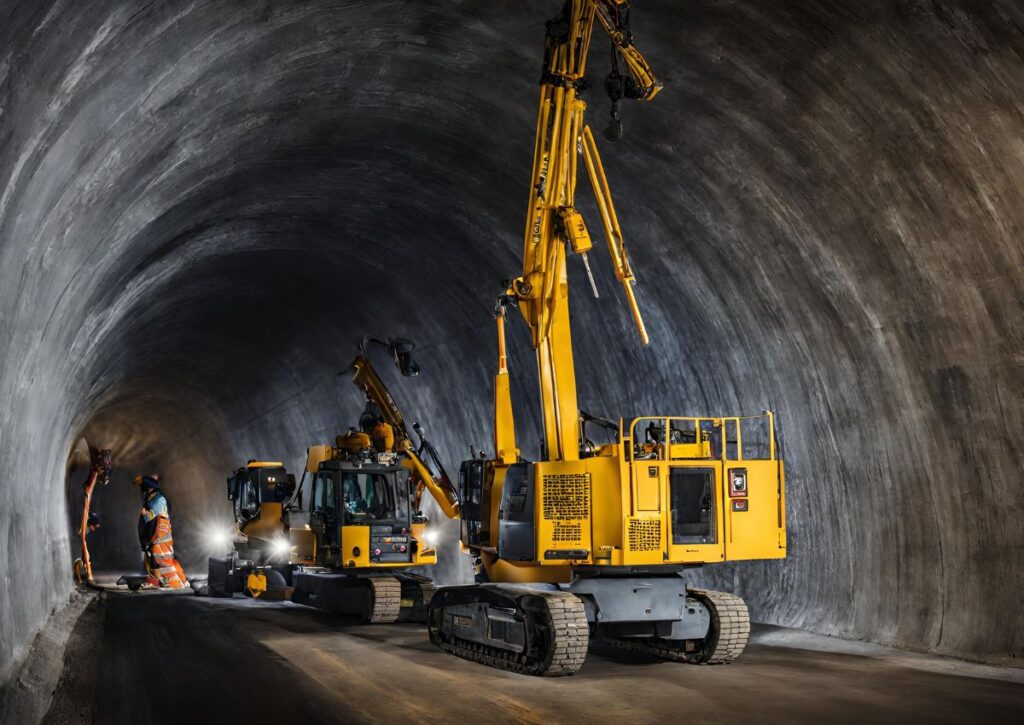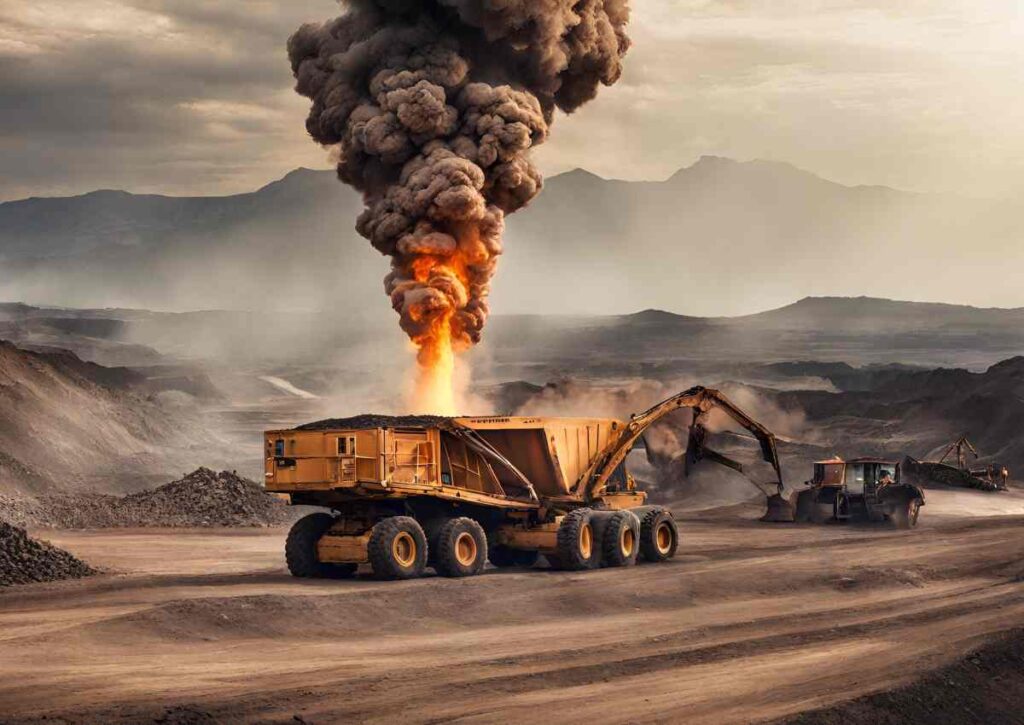Step into the world of drill and blast mining, a timeless technique shaping the landscape. This method, using controlled explosives, breaks rock for mining and construction.
It’s the backbone of tunnelling through tough terrain, crafting roads, and reshaping the earth.
Before tunnel machines, drill and blast was the go-to approach, a symphony of precision and controlled bursts.
Join us in exploring the simplicity and power of drill and blast—a method that continues to carve pathways for progress.
Explosive Variety and Performance
The evolution of drilling and blasting has led to the utilization of a diverse range of explosives, each tailored to specific rock types.
High-velocity explosives prove effective in shattering hard rocks, while their low-velocity counterparts generate increased gas pressure, creating a significant heaving effect in softer rocks.
The contemporary choice for mining explosives commonly revolves around ANFO-based blends due to their cost-effectiveness compared to dynamite.
Role in Tunnel Construction

Before the advent of tunnel boring machines (TBMs), drilling and blasting stood as the primary and economical method for excavating long tunnels through hard rock.
Today, the decision to use a TBM, or drill and blast method, hinges on various factors. Tunnel length is a key determinant, with TBMs being more economical for longer tunnels.
Ground conditions also play a vital role, with different methods tailored to handle specific ground hazards.
Historical Perspective
The use of explosives in mining dates back to 1627, when gunpowder replaced mechanical tools in the Hungarian town of Banská Štiavnica.
The standard method involved drilling a hole, placing gunpowder, and igniting it with a slow match. Safety concerns led to innovations like copper wires and safety fuses.
Significant historical applications include the removal of a chalk cliff near Dover in 1843 and the construction of various tunnels worldwide using drilling and blasting techniques.
Explosive Consumption and Economic Impact

In 1990, the United States consumed 2.1 billion kg of commercial explosives, reflecting a substantial economic investment.
The Soviet Union led in total volume, while Australia exhibited the highest per capita explosive consumption.
These figures underscore the global significance and economic impact of drilling and blasting in various industrial applications.
Procedure: Unveiling the Dynamics
The drilling and blasting process follows a systematic procedure:
- Blast Pattern Creation: A predetermined pattern guides the placement of drilled holes.
- Hole Drilling: Holes are drilled into the rock and partially filled with explosives.
- Stemming: Inert material is added to direct explosive force into the rock.
- Detonation: The explosives are ignited, causing the rock to collapse.
- Rubble Removal and Reinforcement: Debris is cleared, and the tunnel surface is reinforced.
This sequence repeats until the desired excavation is achieved, with the blast pattern and timing crucial for maintaining the tunnel’s circular cross-section.
Rock Support Systems

As excavation progresses, the need for rock support becomes imperative.
Various methods, such as rock bolts, shotcrete, ribs, cable bolts, and in-situ concrete, contribute to stabilising the roof and side walls, preventing rockfall into the excavation.
Conclusion
In conclusion, drill and blast mining stands as a cornerstone in the realm of excavation, offering a dynamic and efficient approach to reshape the Earth’s crust for diverse industrial needs.
As technology advances, this method continues to evolve, ensuring its relevance and effectiveness in the ever-changing landscape of mining and construction.
FAQs
What is the primary purpose of drill and blast mining?
Drill and blast mining is primarily employed to break rock for excavation in activities such as mining, quarrying, and civil engineering projects like dam, tunnel, or road construction.
How do different explosives contribute to drill and blast efficiency?
Higher velocity explosives are used for hard rocks to shatter them, while low velocity explosives are employed in soft rocks to generate increased gas pressure and a greater heaving effect.
Why was drilling and blasting historically crucial for tunnel construction?
Before the advent of tunnel boring machines (TBMs), drilling and blasting was the most economical method for excavating long tunnels through hard rock, where other digging methods were impractical.
What safety measures were introduced in historical drilling and blasting?
Historical safety measures included replacing iron wires with copper to eliminate sparking, introducing safety fuses, and later incorporating electric charges for ignition to reduce accidents during the process.
Why is the choice between TBM and drill and blast method based on tunnel length?
Tunnel length is a crucial factor; while TBMs have a high capital cost, they are quicker than drill and blast for longer tunnels, making them more economical per meter of tunnel.
How does rock support vary in a drill and blast excavation?
Rock support in drill and blast includes methods like rock bolts, shotcrete, ribs, cable bolts, and in-situ concrete, each playing a specific role in stabilising the roof and side walls to prevent rockfall into the excavation.









